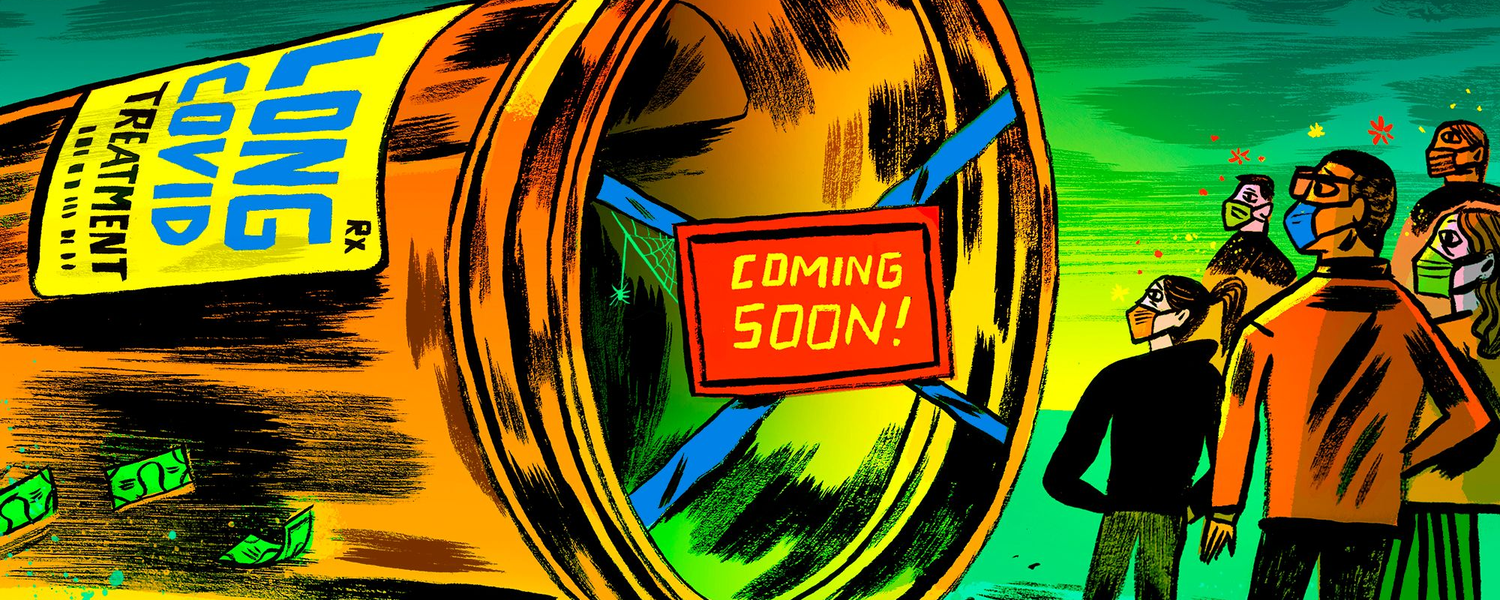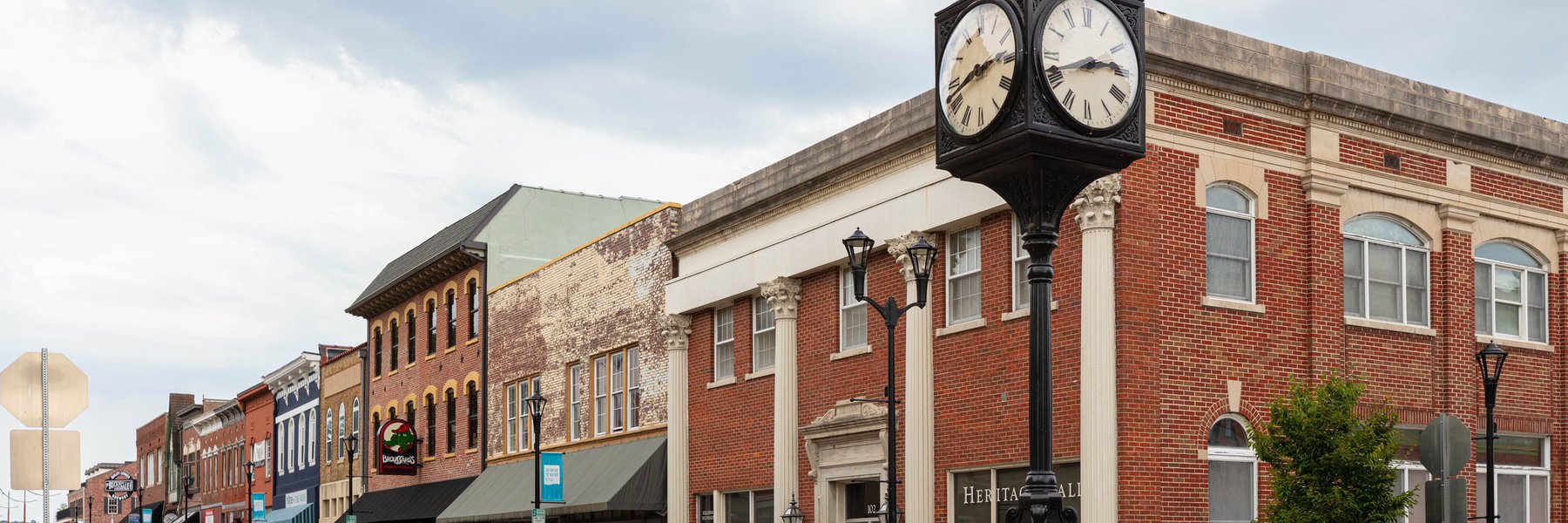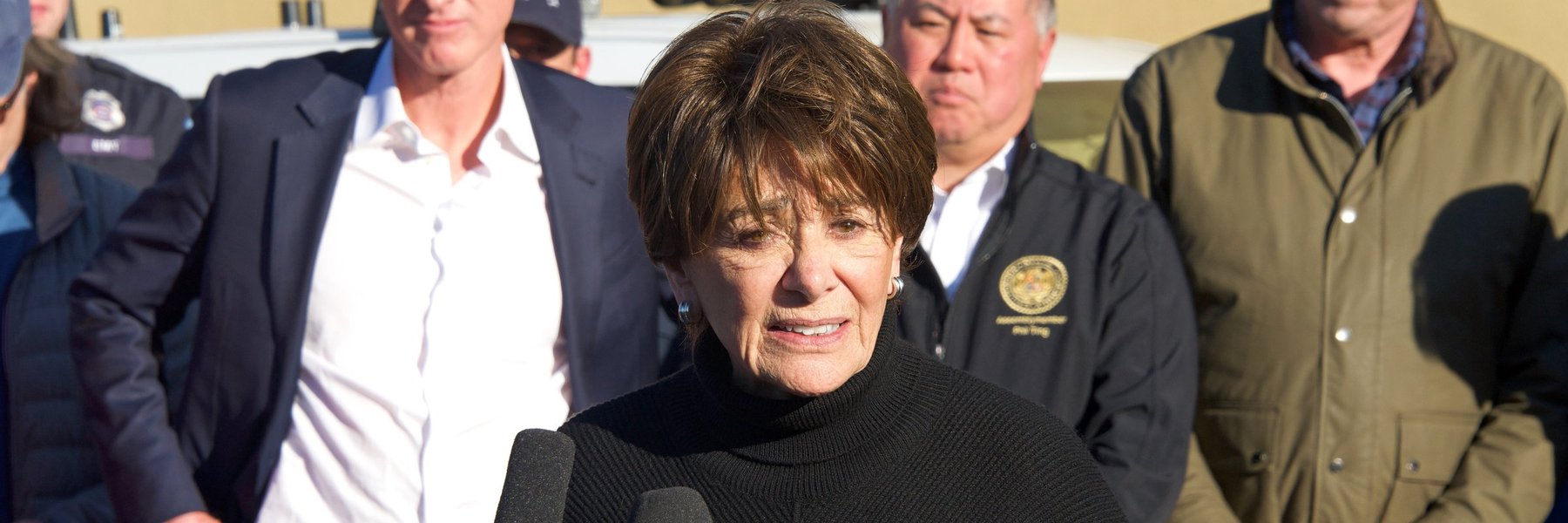Dr. Robin Trotman had an inkling his Springfield hospital system was experiencing a harbinger of what was to come.
It was late June, and CoxHealth was seeing an influx of COVID-19 patients who had already been vaccinated, as the highly contagious Delta variant spread unchecked through the region.
Trotman, an infectious disease specialist at CoxHealth, emailed other hospital system leaders, Missouri’s then-acting health director, Robert Knodell, and the state’s top epidemiologist, Dr. George Turabelidze — first on June 11 and again on June 21 — expressing concern about the “alarming” increase in patients.
But Turabelidze didn’t share that concern, responding on June 21 that the Delta variant was unlikely to lead to a “surge that can overwhelm hospitals.” He reasoned that nearly 80% of Missouri’s elderly were vaccinated and the Pfizer and Moderna vaccines had over 90% effectiveness for hospitalizations, forestalling any hospital surge.
Within weeks of Turabelidze’s prediction, 271 COVID patients were hospitalized simultaneously in Springfield-area hospitals — the highest levels the region had faced in the entirety of the pandemic.
As beds filled to capacity in late July, more than 200 patients were transported from the Springfield area to hospitals as far away as Tulsa, Oklahoma, and Memphis, Tennessee. The transport to Memphis took an ambulance crew over 10 hours, round-trip.
The patients, ranging in age from 2 to 94 years old, were being treated for everything from septic shock to acute respiratory failure to a possible brain hemorrhage.
In logs detailing these transfers, obtained through public-records requests, all but two trips had the same justification repeated over and over:
“Transporting patient as a direct result of COVID and/or hospital over capacity.”
When asked last week about Turabelidze’s June prediction, the state doubled down. A spokeswoman for Missouri’s health department said “we did not enter a crisis care situation in Missouri hospitals at the peak of the Delta variant outbreak.”
Hundreds of internal memos, requests for assistance to the CDC and emails between the local health department, state officials and the federal government were obtained as part of a collaboration between The Independent and the Documenting COVID-19 project at the Brown Institute for Media Innovation and MuckRock. (You can view all of the documents here.)
They reveal that the disconnect, tension and lack of coherent coordination in the early days of the Delta variant’s surge persisted throughout the summer, frustrating local officials who struggled to mount a defense against the virus while state aid was, at times, too slow to help.
Among the findings:
- Springfield hospital and health department leaders urged the state to take advantage of additional genomic sequencing assistance to address unanswered questions about the variant’s spread. The state declined, forcing Springfield officials to seek additional data on their own.
-
After days of preparation for an overflow hospital for COVID patients requested by Springfield officials, local leaders decided to forego the plan after the window of need had passed — setting off dueling narratives over the reason why in public while state officials seethed in private.
-
When local officials pleaded for more support in addressing the Delta surge, state officials questioned the value of directing more resources to the area and even wondered whether the overflow hospital request was fueled by motivations to “pay for an expansion of their private hospital.”
Miscommunication can lead to serious failures in a public health emergency and worsen it as a result, said Sue Anne Bell, an assistant professor at the University of Michigan School of Nursing whose research has focused on disaster response.
“And that’s something that we’ve seen — poor communication or miscommunication, or lack of planning, or unclear roles and expectations — that’s probably characterized the COVID-19 response since the beginning of the pandemic,” Bell said. “People have died across the country because of it.”
Early warnings of Delta’s spread inspire little action
The state had early warning that the Delta variant had found its way to Missouri thanks to wastewater surveillance.
University of Missouri researchers first detected the variant in early May in Branson, then watched it ricochet across the state as they saw greater shares of wastewater samples with the variant present. Marc Johnson, a virologist at MU who leads the wastewater surveillance program, was shocked at how fast Delta spread.
Johnson and his team shared these signals of Delta’s spread with the Missouri Department of Health and Senior Services as soon as they were available. But information from wastewater testing did not translate to immediate action.
On internal calls with local health officials, the state cautioned against causing “mass hysteria or concern” about Delta.
On June 9 — one month after Delta was first detected in Missouri wastewater — news of a different kind of sequencing result reached the Springfield-Greene County Health Department. A Springfield resident who tested positive for COVID-19 had their test sample randomly selected by the CDC’s genomic surveillance program; the sample was identified as Delta.
Unlike wastewater testing — which reflects the overall makeup of coronavirus in a community — genomic sequencing of individual test results can provide public health officials with definitive information about a variant’s presence.
Sequencing individual test results should be a key part of public health response to the signals of potential new outbreaks, says James Lu, CEO of the population genomics company Helix, which has worked with the CDC to sequence coronavirus samples.
Trotman was eager to deploy this type of response once the Delta variant began landing patients in CoxHealth hospitals.
“I wanted to get this conversation rolling so that we are not so far behind on sequencing and we have some data on the vaccine breakthrough infections,” he wrote in an email to state officials on June 11.
State epidemiologist Turabelidze would later recognize the importance of sequencing patient data. If the state had received more samples in early May, they could have identified the Delta surge sooner, he wrote in an early July email to top DHSS officials.
But by that time, the variant had already taken hold.
State denies outside help to boost sequencing efforts
In early June, the University of Minnesota Genomics Center received a $750,000 grant from the CDC to sequence COVID-19 test samples. The grant enabled the center to assist public health departments in Minnesota and surrounding states — including Missouri — at no cost to the local agencies.
Representatives of the Genomics Center wrote to Missouri DHSS multiple times about the free opportunity.
On June 22, a DHSS representative responded: the Missouri public health lab currently had capacity to meet sequencing demands in the state and did not require assistance.
But sequencing demands were not met in Springfield.
In a July 9 email to Springfield-Greene County officials, Trotman described collecting swab samples from about 140 COVID-positive patients and preparing them to send to the state. The hospital’s lab director was “stretched to the max” in keeping up with specimen processing, he wrote. An infectious disease specialist at the Mercy hospital system added that Mercy’s labs were also “stretched” — spending hours a day preparing test samples and sending them to the state at their own expense.
And there had been a misunderstanding: The state lab was, in fact, unable to sequence more test samples from Springfield, local officials learned from a CDC representative on July 14.
At the time, Delta was causing at least 80% of new COVID-19 cases in Springfield and Greene County. But increased sequencing would allow the officials to better understand Delta’s true presence, as well as “get a better understanding of breakthrough and reinfections,” Jon Mooney, the Springfield-Greene County Health Department’s assistant director, wrote on July 15.
That same day, Mooney wrote to Knodell and Adam Crumbliss, director of DHSS’ division of community and public health, to request additional sequencing.
CDC epidemiologists recommended that the Springfield-Greene County public health department sequence about 250 test samples a week, Mooney wrote.
And at that time, Mooney wrote, the state public health lab was sequencing only 200 samples a week — for the entire state.
Why wasn’t the state able to sequence more patients’ samples?
“They just didn’t have the people to run the machines,” MU’s Johnson said in an interview.
Limited staff worked long hours to staff the state lab, he said. Like many other public health departments across the country, Missouri’s DHSS had faced years of disinvestment prior to the pandemic. In recent years, Missouri ranked last in the nation in terms of per capita state funding for public health.
Mooney pleaded in his July 15 email to Knodell and Crumbliss for DHSS to reconsider its decision to turn down sequencing assistance from the University of Minnesota.
Missouri could increase its sequencing to at least 1,000 samples a week with the university’s help, Mooney wrote. But the state remained convinced that outside assistance was unnecessary.
Emails from DHSS staff revealed confusion as to the value that Springfield officials would gain from additional sequencing data.
“I am interested to hear myself from the (southwest) what additional analysis they need regarding variants when we know that it is overwhelmingly Delta in that region,” Turabelidze wrote on July 12.
In addition, DHSS was hesitant to work with the Minnesota lab, as it would complicate how — and whether — sequencing data reached state officials.
“Through communication with the Minnesota laboratory, we learned this would have resulted in test results of positive COVID cases that would not have been appropriately reported to the state,” said Lisa Cox, a DHSS spokeswoman, in a recent statement. “The resulting outcome would have been less transparency and a validation of information we already knew.”
In his July 15 email, Mooney acknowledged that public health officials now had plenty of information demonstrating Delta’s total dominance across Missouri. But, he said, additional sequencing data would be crucial in understanding breakthrough cases, reinfections, case severity and other patterns.
In other words, additional sequencing data could help answer questions like: Who is Delta infecting, and how sick is it making them? Is Delta more likely to break through immune system defenses than other variants?
Trotman was also disappointed with the state’s failure to increase its sequencing capacity.
“This is soooo frustrating,” he wrote in a July 15 email to Springfield-Greene County officials. “The question is why? Why the resistance and contrariness from the state on so many fronts.”
In response to Mooney’s concerns, Knodell said that he would revisit the request. But Springfield-Greene County health officials did not wait for state support; the local health department had already begun to work with the University of Minnesota Genomics Center.
By the time the first batch of Springfield sequencing results from Minnesota arrived on July 19, 100% of samples were Delta.
“This is not a long-term solution, but will at least get us started,” Mooney wrote of the partnership in his July 15 appeal to state officials. “In my opinion, this is also not how our public health system should be working together and I sincerely hope that with your support we can find a solution.”
State officials agreed. The week after Mooney’s appeal, Dr. Laura Naught, director of the Missouri State Public Health Laboratory, called the situation “a mess” and expressed worries that DHSS would “lose hold of surveillance testing” in Springfield.
Alternate care site deliberations reveal miscommunication and mistrust
The back-and-forth over sequencing was not the only issue that raised tensions between state and local officials during this crucial stage of the Delta surge.
On July 19, Springfield officials asked the state for help setting up a standalone alternate care site to treat at least 50 COVID positive patients. A vacant hotel and a dorm on Missouri State University’s campus were viable options that had already been identified. Later, a retirement community would also be an option officials looked at using.
But even as COVID hospitalizations continued to rise, top officials within DHSS questioned the motivations behind the request.
The new request would be asking state agencies to convert a residence hall into a full-on acute care intensive care unit, essentially “asking the government/taxpayers to pay for an expansion of their private hospital,” Crumbliss wrote to Knodell on July 20.
Crumbliss wasn’t optimistic that the site would receive federal approval. If the state wanted to get reimbursed for construction costs through federal funds, the facility would have to be used strictly for COVID patients.
The request seemed “aimed at avoiding the delay or cancellation of elective procedures, and comes with great concern whether FEMA will be willing to fund the request,” Crumbliss went on to write.
After he saw the virus continue to spread up through the Lake of the Ozarks area, Knodell was more convinced that an alternate care site would be needed, according to notes of a July 22 meeting.
Knodell ultimately deferred to the governor’s office on whether to proceed with a site — with Parson’s chief of staff, Aaron Willard, tasked with securing a final decision, meeting notes indicate.
The state decided to move forward, elevating the request to the Federal Emergency Management Agency. Meanwhile, DHSS solicited advice from the Missouri Hospital Association.
On July 23, Paula Nickelson, the administrator of the Office of Emergency Coordination, held a confidential meeting with Missouri Hospital Association representatives who expressed surprise that an alternate care site had been requested.
MHA officials said alternate care sites hadn’t been well-utilized amid the pandemic, including in St. Louis, Nickelson wrote to Willard, Knodell and Crumbliss recapping the meeting.
MHA said they had been clear with hospitals that “beds/physical space is not the problem, staffing is,” and recommended the state focus on funding and enhancing access to healthcare staffing.
“You would be throwing away potential clinical staff to do an alternative care site,” Dave Dillon, a spokesman for MHA, said in a recent interview. “It was going to draw away more resources than it was going to offer.”
As a result, Dillon said, the best option for Springfield hospitals was to transfer patients out of the region where possible.
But EMS crews were already buckling under the surge of patient transfers brought on by Delta.
June had been a record month for CoxHealth’s EMS crews, with 4,901 calls. The impact on staff “has been nothing short of devastating,” with some barely finding time to eat in a 12-hour shift and higher numbers of staff calling out, the hospital system’s director of pre-hospital services wrote to a DHSS official on July 13.
The same day MHA representatives shared their concerns with DHSS, COVID-19 hospitalizations in the Springfield area reached an all-time high of 271.
Over the next two weeks, an ambulance strike team from Arkansas transferred 222 patients from Springfield hospitals out of the region, and in some cases out of the state. The Arkansas team traveled a total of 53,770 miles, according to the State Emergency Management Agency.
An analysis of data tracking these transfers, involving a distance and time estimation for each patient using data from Google Maps, revealed the average patient traveled about 120 miles from Springfield to another hospital.
In total, the Arkansas team spent over 800 hours transferring patients — with an average of four hours for each round trip. The majority of patients, 191 people, traveled for an hour or more to reach their destinations.
Late July emails at both the local and state levels reflect the intense pressure that Delta placed on the Springfield healthcare system.
“In the southwest and throughout mid Missouri there are not available beds for new COVID patients,” a senior research and data analyst within DHSS wrote to top officials on July 24, “and if there are beds there are not enough nurses to take care of patients.”
Meanwhile, state health department officials had been working to coordinate resources, elevating requests to federal officials and identifying vendors for site construction and staffing needs.
On July 28, DHSS was given the green light to move ahead with an emergency, no-bid contract with SLS Health, to establish a 30-to-65 bed alternate care site in Springfield.
SLSCO, a Galveston, Texas-based company best known for border wall construction, would be paid approximately $50,000 a day for their effort.
A federal technical assistance team would be arriving the next day to engage with the state on alternate care site “stand-up and support.”
But by the next day the site’s future was uncertain.
The federal government “is ready to roll,” July 29 meeting notes said. But Springfield officials were reexamining whether the site was still needed — as local hospitals had already taken measures to address the surge.
Springfield officials deciding to pull back from the plan “is almost a silver lining because they are no longer needing it,” Willard said, according to meeting notes.
That afternoon the request for an alternate care site was withdrawn.
“After considerable discussion, the healthcare community felt that they were in a position to be able to manage the current influx of patients themselves,” Larry Woods, director of the Springfield-Greene County Office of Emergency Management, wrote in a July 29 email informing Greene County commissioners and other local officials of the decision.
Conflicting narratives over the site withdrawal
Shortly after 3:20 p.m. on July 29, an official for the city of Springfield notified the governor’s office that it would announce the cancellation of the alternate care site at a news conference the next day.
Cora Scott, director of public information and civic engagement for the city of Springfield, said in an email to the governor’s spokeswoman that the local health department, the city and the mayor thought it would be best that they announce their decision to cancel the request. They felt a press conference would be better than a news release.
But state officials had already drafted a press release of their own, which they eventually sent to the media at 4:11 p.m. that day.
A draft of the state’s press release included space for a statement from a local official.
“Does anyone have a relationship with someone down there…” asked Mike O’Connell, communications director for the Missouri Department of Public Safety, as he sent the draft to other state officials. He hoped a joint release would “show consensus between the state and locals.”
Yet no statement from a local official made it into the governor’s press release. The final version quoted unnamed Springfield hospital leaders touting state assistance as “a life-line” and “hugely helpful.”
In response, local officials were forced to quickly issue their own news release, countering the narrative portrayed by the governor’s office that the cancellation meant the Delta variant threat had abated.
The real reason for the cancellation, Springfield leaders said in their press release, was because local providers had quickly built capacity in the face of the state’s slow response.
“We were surprised, given earlier discussions with the Governor’s Office and other state agencies, when media contacted us for our reaction to a news release issued today,” Scott wrote to Springfield Mayor Ken McClure and other city officials forwarding the governor’s announcement and the health department’s response.
Kelli Jones, a spokeswoman for the governor’s office, said last week an offer to coordinate a joint press release with the local health department was declined. So the governor’s office went ahead with a release of its own.
A spokesman for the Springfield-Greene County Health Department declined to comment. Scott declined an interview request and said, “This is behind us and we don’t wish to comment further via interviews.”
Seeing things play out in the press and social media speaks to a communication breakdown between state and local officials, said Bell, the disaster response researcher. In an emergency, resources need to be devoted to address the surge, instead of developing press releases or tweets.
Mark Buxton, a rapid response team coordinator within DHSS, recapped the events surrounding the alternate care site in a draft situation report for the week of July 26. The bitterness over Springfield’s decision to withdraw its request was clear.
“Staff at DHSS worked tirelessly into late hours; at times prioritizing the work over other aspects of the response, and fought to win the necessary federal resources in spite of considerable federal skepticism. DHSS pleaded the case all the way to the White House. DHSS succeeded,” the draft report read.
“Springfield Greene backed out of the request, made public pronouncements to complain about DHSS, and said they would establish the alternate care site on their own using local resources.”
Future preparedness requires public health investment
Across the country in the first months of the pandemic, field hospitals ran up tens of millions of dollars in costs to construct them. But many missed the surge of patients they were trying to help mitigate. Sites went unused or treated few patients at all.
Missouri officials were first notified of the Delta variant’s presence through genomic sequencing on May 8. By June, hospital officials in Springfield were raising the alarm about increasing numbers of breakthrough cases. But requests to create an alternate care site and site assessments weren’t underway until July — when hospitals in Springfield were already nearing a breaking point.
“When you need the help, you need it right now,” Bell said. “You don’t need it in 10 days, you need it now.”
In a statement last week, a representative of CoxHealth acknowledged that as Delta spread, hospital staff faced challenges: “Experts at all levels were working in an unprecedented situation and there were certainly moments of frustration.”
Aaron Schekorra, a spokesman for the Springfield-Greene County Health Department, declined an interview request, saying, “We believe the correspondence provides the needed context on these topics, so the Department does not have any further comment at this time.”
Woods declined to answer questions in an interview and said: “Disasters are what they are. That’s why they’re called disasters. So there are never enough resources, there’s never enough time to have things in place, there’s never enough time to get things done.”
In addition to setting up an alternate care site, health systems will need to ensure that they have enough staff to care for a surge in patients or utilize services like telehealth to fill gaps.
At the same time, Lu, the sequencing expert, stressed the importance of building national surveillance systems that can alert health systems to the need for such an alternate care site. Surveillance can include wastewater testing like the system already underway in Missouri, increased testing of individuals, and sequencing those tests for novel variants — or other viruses in the future.
Trotman agreed, in a recent statement reflecting on future precautionary measures.
“As with the entire U.S. — and the globe — having systems in place for mass sequencing in the future will be a priority,” he said. “This will be key in identifying future threats.”
With a sustained lack of investment in public health across the country, being unprepared to handle a major public health emergency shouldn’t come as a surprise, Bell said.
“Without structural or systemic change, you can’t pull resources out of thin air,” Bell said. “I think that’s what local public health departments and health systems have been asked to do.”
Header image shows CoxHealth President and CEO Steve Edwards, left, and Dr. Robin Trotman, center, speaking with Gov. Mike Parson at Cox Medical Center in Springfield on October 23, 2020 and in the public domain via Missouri Governor’s Office Flickr account.
This story was reported by Tessa Weinberg of the Missouri Independent and Betsy Ladyzhets of the Brown Institute for Media Innovation and MuckRock’s Documenting COVID-19 project.
Smarth Gupta of the Documenting COVID-19 project and The Independent’s Allison Kite contributed to this report.




